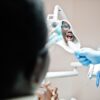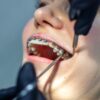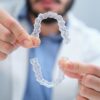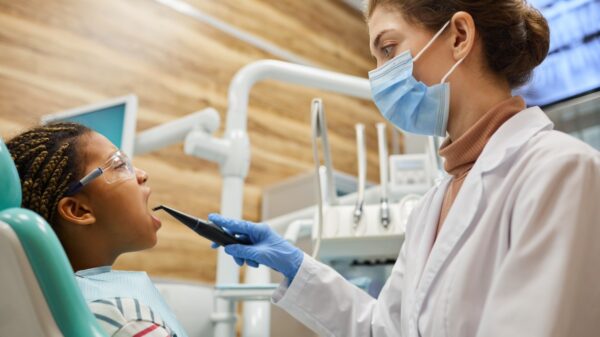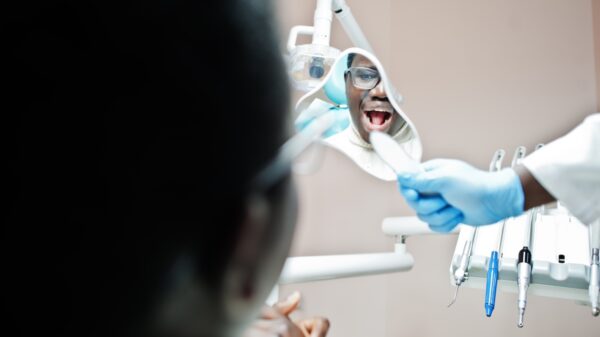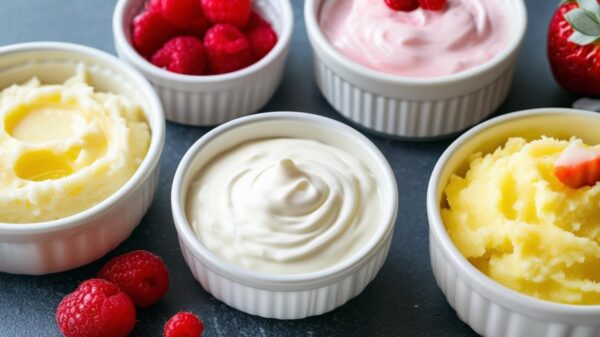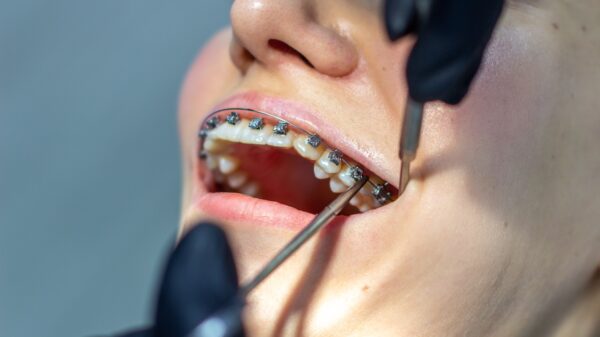How Often Should You Replace Your Toothbrush?
Proper dental hygiene not only gives you pretty, pearly white teeth but also contributes to your overall health. When you experience problems with your oral health, it can lead to other bodily problems and greater issues down the road. In this article, I have collected information on when you should replace a toothbrush and other proper dental hygiene practices.
So, how soon should I replace my toothbrush? The consensus among dental experts is that you should replace your toothbrush every 12-16 weeks, or every 3-4 months. Life throws many things at us all the time, so keeping track of how long you’ve had your toothbrush may not be on the top of your priority list. Luckily, there are some signs you can look out for that will tell you it’s time for a new toothbrush.
Signs to watch for:
- Hard bristles
- Frayed bristles
- You’ve been sick
- Storing your toothbrush in a travel container
- You dropped the toothbrush
Keep reading to learn more about the importance of replacing your toothbrush regularly.
Why Is It Important to Change Out Your Toothbrush?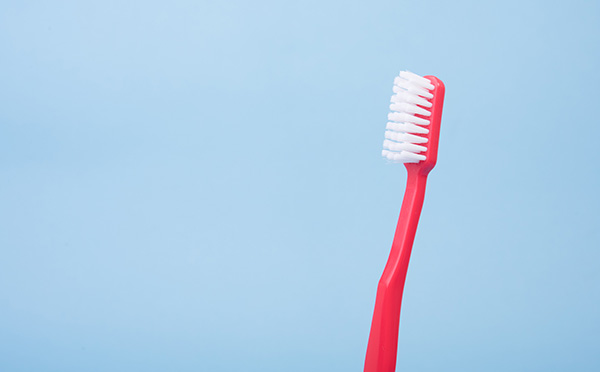
Brushing your teeth is the first line of defense to keeping them healthy and protecting them against harmful bacteria, tooth decay, and bad breath. Straight, soft-bristled toothbrushes are the best kind to navigate the crevices in between your teeth, and also your gums.
Over time and use, your toothbrush will experience some wear and tear, as well as a buildup of germs. Hard bristles and toothbrushes with bacteria and germs will not be as effective at removing plaque and can introduce that bacteria to your system – causing you to become sick or adding other problems.
A good way to remember it is time to change your toothbrush is to replace it once in the middle of your twice-annual dental visits. If you follow proper dental hygiene, you should see your dentist every six months. Change out your toothbrush once in between those visits and you should be good.
Signs It’s Time to Replace Your Toothbrush
There are several telltale signs that it is time to replace your toothbrush. Some of these include:
Hard Bristles on Your Toothbrush
When you buy a new toothbrush, the bristles are soft and you can run your finger over them and they are flexible. A new toothbrush has clean bristles that will effectively get into the nooks and crannies between your teeth.
Over time, the brush is exposed to germs in your mouth and the air. Those germs will cause the bristles to become hard and less flexible and they are no longer effective at removing plaque and bacteria. Once you begin to notice a hardening of the bristles on your toothbrush, it should be a sign to get a new one.
Something to note about bristles that are bent or frayed. If your toothbrush is relatively new and you’re already seeing bent bristles, it could be a sign that you are brushing too hard. Sometimes, aggressive brushing can have the opposite of the desired effect and cause damage to your tooth’s enamel.
![]()
Frayed Bristles
As we mentioned above, frayed bristles can be a sign that your toothbrush has seen better days. The shorter bristles on the inner part of the brush head will fray more quickly. Once you notice it on the outer ring of bristles – you should go pick up a new one.
Again, it could be a sign that you are brushing too hard so be cautious! Talk to your dentist if you have questions or see if they have any concerns about your brushing habits.
Have You Been Sick?
Just as your toothbrush is exposed to germs in the air when it rests, it is also exposed to germs in your mouth! A lot of times, we forget to replace our toothbrush after we’ve been sick. However, it’s something that will keep your teeth healthy and prevent you from getting sick again.
If you’ve been sick with a head cold or the flu, you won’t want to reintroduce those germs to your body after you’ve recovered and a used toothbrush is a good way for that to happen. Try keeping a few new toothbrushes on hand in case you forget to replace yours after a case of the sniffles.
Storing Your Toothbrush Wrong
Many people don’t realize that they are storing their toothbrushes wrong, both when they are at home and when they travel. When you keep a toothbrush in a closed-air container/drawer, it can be an inviting environment for leftover bacteria to grow and stick around.
The warm, moist environment is an ideal place for bacteria to grow and it makes it more difficult for the brush to dry out after use. So while it’s okay while you’re traveling, be sure to keep a new one on hand to replace it when you get home.
At home, be sure to store your toothbrush in an open-air area. Whether you keep it on the counter or hidden away – make sure it has room to breathe. The bristles need to dry out to avoid bacteria growth, as well as expand their lifespan.
![]()
Have You Dropped Your Toothbrush or Has It Touched Another Surface?
Even though we have covered the germs that come into contact with your toothbrush, we can’t say it enough. If your toothbrush has touched someone else’s, been used by someone else, been dropped, or touched another unclean surface – replace it!
A clean, soft, flexible toothbrush is not only important to your dental health, but it’s also important to your overall health. We must take care to know exactly what we’re putting in our bodies, which includes unintentional germs.
One of the best things you can do is buy a bulk pack of toothbrushes, like 4-8 and keep them on hand in case you travel, get sick, drop them, or something else happens. Your mouth and your dentist will thank you.
Take Care of Your Toothbrush
To get the most out of your toothbrush that you can, take care of it. Don’t share your toothbrush with anyone else, store it in an open-air area to allow for drying out, and rinse the toothbrush after brushing with tap water.
Whenever you use an old toothbrush, you are introducing bacteria to your mouth and you are missing important plaque that may be hard to reach. Whenever you brush too hard, you are potentially damaging your tooth’s enamel. This can’t be replaced.
Like the famous saying goes “not too much, not too little.” Be aware of your toothbrush health and you will see an improvement in both your oral health and your overall health.
What Is Proper Dental Hygiene?
Following proper dental hygiene will keep you and your teeth healthy and save you money in the long run. It is recommended that you brush your teeth at least twice a day, for two minutes each. Your dentist will highly encourage you to floss, at least twice a day but preferably every time you eat.
You should do your best to visit the dentist twice annually, or every six months. These visits will allow your dentist to give you a proper cleaning, take x-rays, and make sure there aren’t any problems that could arise.
The final step in your proper dental hygiene care is to replace your toothbrush every 3-4 months, or when you notice the bristles hardening, fraying, or becoming too stiff. If you follow all of these steps, you should have a happy, healthy, pearly white smile!
Don’t be scared to go to the dentist if pain or irritation occurs. It’s better to get something checked out early, or you may have a bigger, more expensive problem down the road.
Related Questions
Do I need to replace my electric toothbrush head? YES! If you prefer to use an electric toothbrush, you should care for it just as you would a regular toothbrush. This means every 3-4 months, after you’ve been sick or it’s come in contact with another surface, you should be replacing the head.
Electric toothbrushes attract the same kinds of germs as normal toothbrushes. There’s a chance the head could last a bit longer because of the movement it makes on an electric toothbrush, but the warning signs are the same. Hard, frayed, stiff bristles should alert you that it’s time for a change.
![]()
How do I choose the right toothbrush? Choosing the right toothbrush is important. It can be different for everyone. Things to look at when picking out a toothbrush include size, bristle variety, bristles softness, and personal preference.
If you prefer a certain type over another, consult with your local dentist to see if they agree, or if they have another recommendation that could benefit you even more. Oftentimes, personal preference is the way to go. There are many dentist-approved toothbrushes available for you to choose from.
How do I choose the right toothpaste? Every individual is different. Some people are more prone to sensitivity, so a good sensitive toothpaste like Sensodyne may be helpful. Others prefer whitening toothpaste, and while there are several out there, your dentist may be able to point you to a toothpaste that will work and be better, for your teeth specifically.







